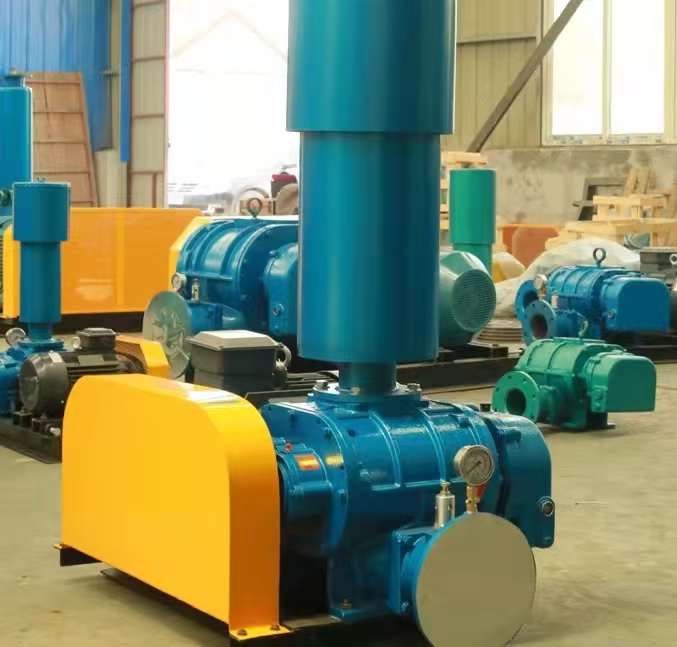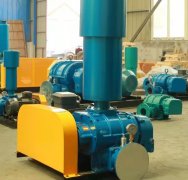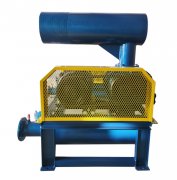Fluidized Roots blower is a specialized equipment designed based on the principle of Roots blower, which achieves continuous gas transportation and compression through impeller rotation. It is widely used in fluidized bed processes to provide a stable gas source for material fluidization. The following is an explanation from four aspects: technical principles, structural characteristics, application fields, and selection points:
1、 Technical principles
1. Volumetric compression: The fluidized Roots blower creates a volume change in the cylinder through two synchronously rotating impellers (rotors), which suck in gas from the inlet and compress it before discharging it.
2. Forced gas delivery characteristics: When the impeller speed is constant, the gas flow rate is independent of the outlet pressure, ensuring uniform gas distribution in the fluidized bed.
3. Pressure adaptability: Single stage pressure increase is usually ≤ 58.8kPa, and two-stage series connection can increase it to 117.6kPa, meeting the gas pressure requirements of fluidized bed processes.
Structural Features
1. High precision rotor: High precision three or two blade rotors are used to ensure that the clearance between the impeller and the casing, as well as between the impeller and the side plate, is ≤ 0.4mm, reducing gas leakage.
2. High temperature resistant design: Key components such as rotors and casings are made of heat-resistant cast iron or stainless steel materials, which can withstand high temperature environments with an intake temperature of ≤ 40 ℃.
3. Sealing structure: High sealing structures such as labyrinth seals and mechanical seals are preferred to prevent gas leakage from affecting the fluidization effect.
4. Low vibration and noise: The three bladed impeller design reduces gas pulsation, with a vibration speed of ≤ 4.5mm/s and noise of ≤ 85dB (A), meeting the requirements of industrial environments.
3、 Application Fields
1. Fluidized bed reactor: provides stable gas source for fluidized bed reactors in chemical, metallurgical and other industries, promoting material fluidization and reaction.
2. Homogenization mixing: In cement production, the material is fluidized and rolled up and down by compressing gas to achieve uniform mixing.
3. Pneumatic ash conveying: In thermal power plants, ash is sent into the ash silo through compressed gas, or a vacuum pump is installed at the end of the ash discharge system to suck the gas in the pipeline and make it fall into the ash silo.
4、 Key selection points
1. Flow and pressure matching: Calculate the required air volume (m3/min) and pressure (kPa) based on the fluidized bed process requirements, and select the appropriate model. For example, the 150 type has a flow range of 10.39-27.05m3/min and a pressure increase of 9.8-58.8kPa.
2. Material selection: High temperature environments require the use of heat-resistant cast iron or stainless steel materials to prevent component deformation or corrosion.
3. Sealing performance: High sealing structures such as labyrinth seals and mechanical seals are preferred to avoid gas leakage affecting the fluidization effect.
4. Motor power: Reserve a power margin of 10-15 based on the fan shaft power and actual operating conditions to ensure long-term stable operation.
5、 Typical case
A certain chemical enterprise uses a 200 type fluidized Roots blower to supply gas to fluidized bed reactors. By optimizing the gear clearance to 0.12mm and upgrading it to a mechanical seal structure, the lifespan of the blower has been extended to over 8 years, and the annual failure rate has been reduced by 60%.
Conclusion: The fluidized Roots blower can significantly improve the efficiency and stability of fluidized bed processes through precise selection and scientific maintenance, and is an indispensable key equipment in modern chemical, metallurgical and other industries.



